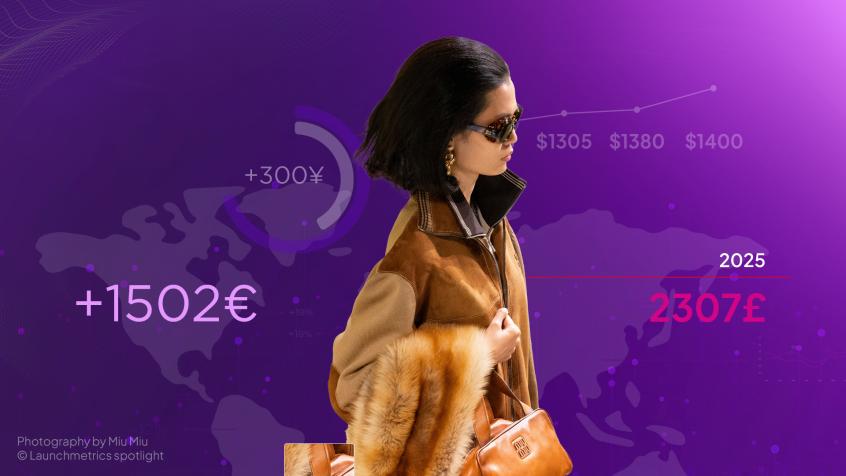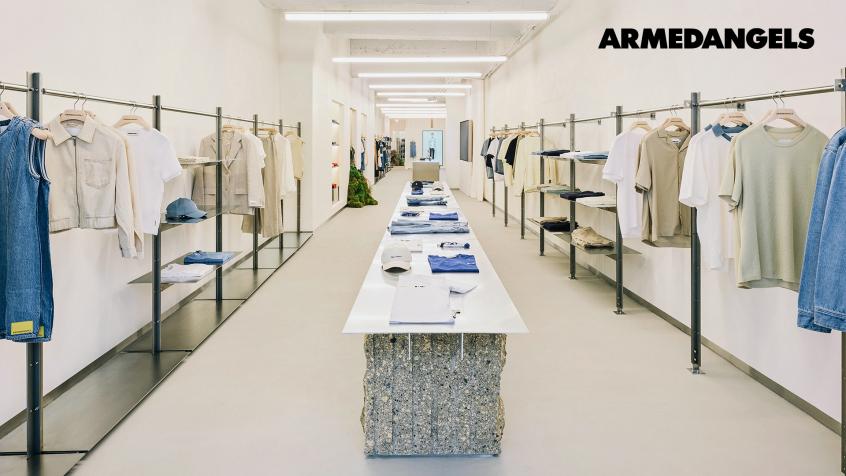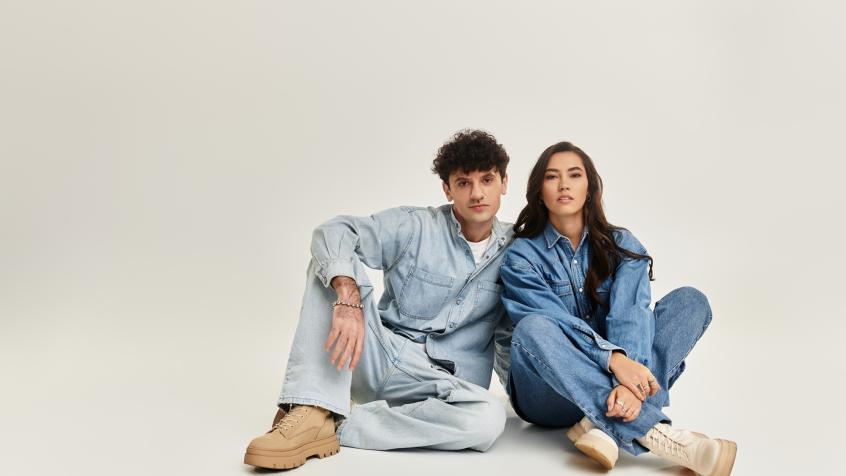Optimizing brand image on marketplaces
Farfetch? MyTheresa? Nail your strategy across sales channels

Key takeaways
- Gucci, Prada and Bottega Veneta all hold a higher share of leather goods on their own e-commerce platform, than on marketplaces.
- MyTheresa has the same maximum price but a lower entry price than the other marketplaces for the Gucci brand, reaching a wider audience base
- Thanks to Retviews’ product matching, spot price discrepancies across different sales channels. Coperni’s prices differs between its own e-commerce platform and its marketplace offer.
Decoding marketplaces
Marketplaces have become increasingly prominent and due to the European online fashion market’s explosive growth, brand presence on marketplaces is crucial. With the right strategy, brands are using the power of AI to optimize their marketplace presence and performance.
In the past, luxury brands were reluctant to tap into the marketplace industry, fearing an erosion of brand identity and inability to fulfill the much-desired shopping experience that represents the core of a luxury brand. However, there has been a shift in consumer behavior, as a study conducted by Bain indicated that online sales will become the preferred sales channel for luxury goods by 2025.
Marketplaces are a way for brands to tap into a wider audience of aspirational consumers and younger shoppers (seen in Ferragamo’s latest partnership with Farfetch), as well as expand their digital presence on a larger scale. Questions remain however on how these brands, namely luxury brands, are represented on marketplaces.
Looking at the assortment share among popular luxury brands, Retviews’ data show that Farfetch has the largest range of brands, highlighting its ability to appeal to a wider group of consumers.
Considering this, Gucci is the luxury brand that stands out in leading luxury marketplaces, making up the largest portion of their respective collections. This raises the question for other luxury brands: should they be expanding their offer on these marketplaces, seeing as Gucci stands above the rest in terms of marketplace presence? Or is Gucci far too present on marketplaces, leading shoppers away from its own e-commerce platform?

Focus on ready-to-wear
Leather goods not only represent a luxury brand’s identity but are also what differentiates luxury brands from premium ones. On top of that, leather goods are among the categories experiencing the fastest growth within the market for personal luxury goods, the worldwide segment value for leather goods in 2022, is estimated to be $66.21 billion, with the US as the largest market. Moreover, the value of the EU market is $18.67 billion and is expected to grow annually by 8.32% until 2027.
As leather goods are such a vital part of a luxury brand’s collection, should their assortment share be equally as prominent on marketplaces? Or could too many leather goods on marketplaces diminish the exclusivity of a luxury brand and lower sales on their own e-commerce platforms?
Retviews, the competitive analysis platform for fashion brands shows that there is a similar trend among luxury brands, all holding a higher share of leather goods on their own brand website, compared to marketplace platforms. Retviews’ data show that MyTheresa has a more variegated offering for Bottega Veneta, than Farfetch.
Ready-to-wear stands out in marketplace assortments, which could be directly linked to the fact that, when shoppers are on the hunt for a bag, they know what they want and opt for the in-store experience or directly shop on the brand website. Whereas, when shopping for apparel or accessories, shoppers may have a budget, style or category in mind without a specific preference, opening up the possibility to browse on the marketplace.
Incorporating Retviews in a brand’s daily activity allows teams to keep track of the brand’s own presence on marketplaces and see how its own offer compares to competitors, across different sales channels. How are your products priced? How does your marketplace assortment compare to competitors’? Dive into the real-time data with Retviews, the AI-powered market intelligence platform that the industry’s hottest brands are using.

Are high-end shoppers immune to recession?
Considering the impending recession, mid-level income shoppers are slowing down apparel spending. The high-income consumer however is driving the luxury sector, as they continue to splurge on high-end pieces. This raises a question for luxury brands on marketplaces: should they now adapt their price positioning, to cater to higher-income consumers? Also, which cohorts are marketplaces focusing on: entry-level or high-income shoppers?
Retviews’ data show that Gucci’s own e-commerce platform positions itself on the higher end of the luxury market, compared to marketplaces. Retviews’ data indicate that 15% of Gucci’s leather goods are priced at over € 3000, whereas only 3% and 4% of Gucci leather goods on marketplaces Farfetch and MyTheresa respectively, are in that price range.
The latest financial reports from LVMH and Hermes, prove that luxury consumers are continuing to spend on high-end categories, still feeling the urge for dopamine dressing. Taking this into account, should brands then shift their focus to cater to higher-spending consumers? Farfetch is already doing this, as it launched a concierge service dedicated to its higher-spending customers, in order to help them spot hard to find items, unavailable on the regular Farfetch marketplace.
As spending cuts on luxury goods were sharpest among middle-income Americans with yearly incomes of $50,000 to $125,000, and those with yearly incomes of less than $50,000 a year, what sectors are marketplaces focusing on? Accessible or high-end luxury?
As shown by Retviews data, MyTheresa has the highest focus on high-end luxury, making up 80% of its collection, whilst Ssense is almost equally split between accessible and high-end luxury. Could this also determine these marketplaces’ success in times of recession?


Aspirational shoppers or high-income consumers?
Many luxury brands are expanding their offer to appeal to entry-level Gen Z and aspirational shoppers, as they make up a big portion of sales. How are leading luxury brands positioning themselves as middle-income consumers are cutting down on spending due to the recession?
When analyzing the leather goods assortment for Gucci, Retviews’ data show that the brand’s own e-commerce platform maintains the highest average price, reflecting its wider range of leather goods priced at over €3000. Although its maximum and minimum prices are closely aligned to its offer on marketplaces, Gucci’s own e-commerce platform has a higher share of high-end items, playing on exclusivity for its most iconic pieces.
MyTheresa holds the lowest entry price for Gucci items. Considering the fact that it has the same maximum price as the brand’s own website and other marketplaces, MyTheresa is able to cater to a wider audience of aspirational shoppers with its low entry price. On the other end of the spectrum, Net-a-Porter’s maximum price stands higher than that of Gucci’s own website. Could this price positioning be what’s hurting the marketplace?
With Retviews, brands are able to access real-time data and see where their brand stands on marketplaces, how their pieces are priced, and how their presence on marketplaces compares to competitors.

Protect brand image
One major added value of a marketplace, from a consumers’ point of view, is its occasional lower price point, compared to a brand’s own e-commerce website. This is particularly the case for luxury brands, who are largely unfamiliar with discounts.
From a brand’s point of view however, how can they ensure and protect their brand image, when their collections are sold on marketplaces, often at lower price points? This is precisely where Retviews comes in.
As shown by Retviews’ data, trending brand Coperni’s heart tote bag is cheaper on marketplaces Farfetch and MyTheresa, than on its own e-commerce website. Seeing this price discrepancy in real-time on Retviews, allows a brand like Coperni to monitor sales channels and ensure that their brand image remains intact.

Expanding collaborations to marketplaces
Exclusivity and luxury go hand in hand, and many brands are launching exclusive capsule collections with marketplaces. As analyzed in previous Retviews articles, luxury brands are no strangers to collaborations, representing a key driving force in brand popularity.
Exclusive capsule collections benefit both the brand and the marketplace in question, creating clout yet also pushing the consumer to shop on that specific marketplace. Retviews’ data show that popular brand Jacquemus launched exclusive capsule collections with Net-a-Porter, Ssense and MyTheresa. Net-a-Porter holds the largest capsule collection, representing nearly 9% of the marketplaces total Jacquemus assortment.
Retviews proves to be the best ally for your brand to optimize its marketplace strategy, providing a 360° view of competitors’ strategies in terms of assortment, pricing, discounting and marketing activities. Retviews’ product match function allows you to find exact product matches and spot price variants across sales channels in order to protect brand image and manage brand distribution worldwide. Don’t fall behind your competitors, optimize your marketplace strategy with Retviews.
Use the Retviews platform to benchmark your offer against your competitors
Related Content









